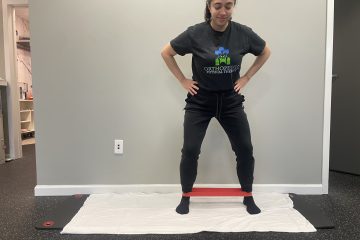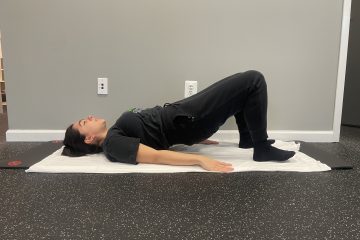There are a lot of things we didn’t learn in health class that we probably should have. Things like bladder and bowel health, what’s normal with your period (and what’s not), and signs of pelvic floor dysfunction are all neglected in your traditional health and sex-ed curriculum. And unless your parent is a urologist, gynecologist, gastroenterologist, or pelvic health specialist, chances are you didn’t learn these things at home either.
One major thing that affects us ALL but many people don’t know, even as adults, is how to properly poop! And on top of that, many people don’t realize the signs and symptoms of constipation and how that can impact other aspects of your pelvic floor and bladder health.
So, let’s talk pooping 101 and everything you should have learned in health class about going number two.
How Often Should You Be Pooping
Let’s start by addressing that there is a wide range of what is considered “normal” when it comes to bowel movements. Normal pooping frequency is as often as three times a day (3x/day) to three times a week (3x/week). That’s right, you do NOT have to poop every day to be considered “normal”, but you should be going consistently based on your normal frequency. For instance, if you typically poop twice a day and then start having bowel movements every other day, this could be a sign of constipation. On the flip side, if you typically go 2-3x/week and then start going multiple times a day, this could be a sign of GI distress.
Ideally, you should also be pooping around the same time of the day with every bowel movement. The majority of people have bowel movements within the first few hours of waking, but if you find yourself going in the afternoon or evening, that’s fine too! As long as it’s consistent and predictable for YOU.
Defining Your Poop
When it comes to understanding how to properly poop, it’s also important to talk about the different types of stool. When we define our stool, it’s surprising how many people don’t know that they’re actually constipated. People think that as long as they are pooping on a daily basis, they can’t be constipated, but that’s actually not the case. In addition to the frequency of bowel movements, we also need to look at the quality of our stool to determine if it’s too hard, too soft, or just right.
For this, we use the Bristol Stool Scale. This is a chart that looks at seven different types of poop and can help us determine if things are normal or abnormal. Types 1 and 2 signal mild to severe constipation, whereas Types 5, 6, and 7 signal looser, more diarrhea–like poops. To be considered “normal”, we want Type 3 or 4 which is well formed and easy to pass.

How to Poop for Better Pelvic Health
Now that we’ve discussed normal voiding frequency and the type of stool you should be passing, let’s talk about how you should be pooping. Bowel movements in general should be easy to pass and should not involve straining or forceful pushing. In fact, pooping should be a passive task, meaning you get the urge, you sit down on the toilet, and within a minute or two you have completely emptied with little to no effort. (say whatttt???)
For some people, that may sound impossible because you’ve spent your whole life pushing and straining to get the poop out for several minutes every time. That’s not how it should be and these methods put a lot of additional pressure on the pelvic floor which can lead to hemorrhoids, prolapse, incontinence, and general weakness in the pelvic floor.
When it comes to pooping, you should be having a bowel movement when you get the urge. This means that the internal anal sphincter (which we don’t control) has relaxed and we can now empty our bowels. Without this urge, it’s like pushing against a closed door and will make it very difficult and sometimes painful to poop. The urge usually only lasts about 10 minutes and after that the internal sphincter tightens up and we have to wait until the next urge to have a successful bowel movement.
Once you get the urge to poop, it’s important that we get in the optimal position to empty the bowels. The newer American toilets are made taller than they used to be, which doesn’t put your pelvis, hips, or colon in an ideal alignment to make this happen. For positioning, you want your knees higher than your hips and your feet completely supported so that your pelvic floor can relax and the stool can empty with ease. That’s why the squatty potty has gained so much popularity over the last decade! It’s perfect for getting you in the best position for bowel movements and reducing strain on your pelvic floor. If your knees are lower than your hips, the angle of the rectum is greater and the pelvic floor can’t fully relax, which makes it much harder to evacuate stool.

Once in the proper position, you’ll want to lean slightly forward at the hips and prop your elbows on your knees. Take a few deep belly breaths and try to let your glutes, abdomen, and pelvic floor relax. As you exhale through your mouth, gently bear down through your abdomen and into your glutes. This should allow the stool to slide out with ease and minimal effort. If you have the right stool type and optimal position, it really should be that easy and quick!
Curious to learn a little bit more about how pelvic health physical therapy can help you have better poops? Schedule your FREE 10-minute consult call today ✨
Be empowered in education,
OrthoPelvic Physical Therapy


